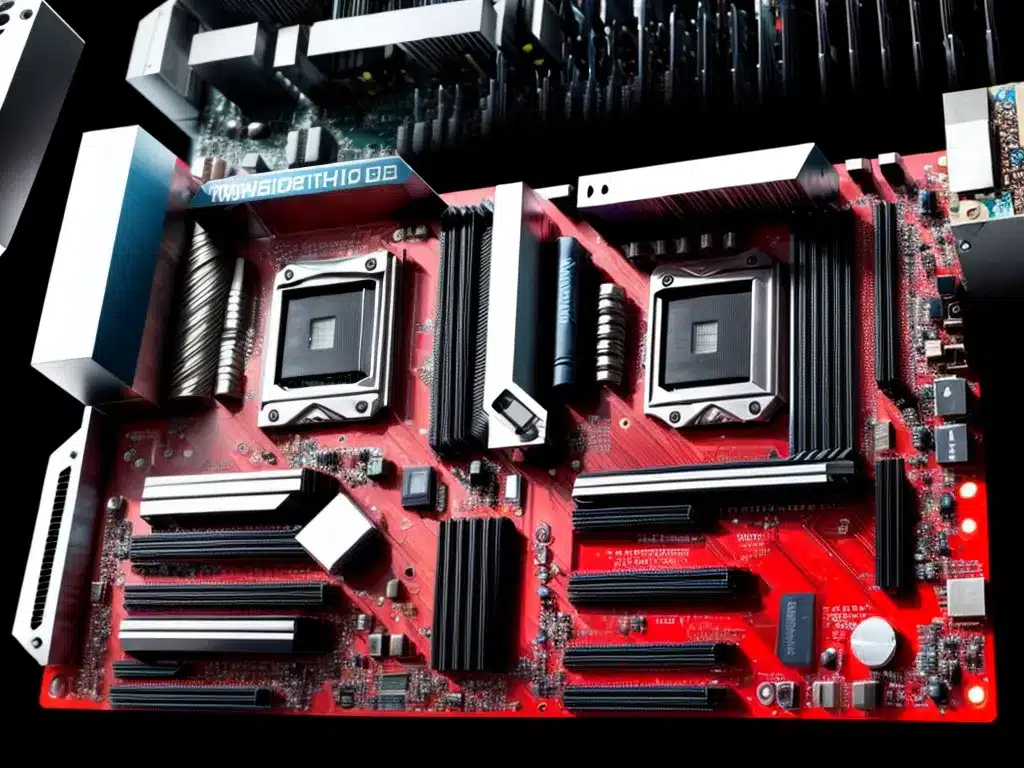
Introduction
In 2024, I expect to see major advances in computer motherboard technology that will bring faster performance, more connectivity, and greater capabilities to PCs. As the foundational component that connects all other parts of a computer together, the motherboard has a central role in determining the abilities of the overall system. In this article, I will examine some of the likely improvements and changes coming for motherboards in 2024.
Faster Processors & Memory
One of the biggest shifts on the horizon is the transition to DDR5 memory and new, faster processors from Intel and AMD. DDR5 brings major bandwidth increases over the current DDR4 standard, meaning data can move much quicker in and out of memory. When combined with GPUs and CPUs that leverage PCIe 5.0 and new CPU socket types like LGA1700 and AM5, the entire system will get a performance boost.
I expect to see DDR5 become the new normal for consumer desktops and laptops by 2024. Major manufacturers like ASUS, Gigabyte, and MSI will shift their motherboard product lines to support DDR5 memory modules and the latest processors. For users, this upgrade path will bring noticeable speed improvements for both everyday tasks and resource-intensive applications like video editing, 3D modeling, and PC gaming.
More PCIe Lanes
Another forthcoming improvement is an increase in the number of PCIe lanes coming from CPUs. PCIe lanes provide dedicated pathways for inter-component communication, allowing expansion cards like graphics cards to operate at full speed. By 2024, even mainstream consumer CPUs will likely offer 20 or more PCIe 5.0 lanes, compared to just 16 or 20 lanes on most current models.
With this expanded lane capacity, motherboards will be able to support more high-bandwidth devices simultaneously. For example, users will be able to install multiple fast NVMe SSDs and add in powerful graphics cards without congesting the PCIe lanes and limiting performance. This sets the stage for highly capable and upgradable PCs capable of demanding workloads.
Improved Power Circuitry
To support the power requirements of the latest high-end hardware, motherboard power circuitry will also need to improve. Intel’s upcoming ATX12VO standard points to the future direction of power delivery on motherboards. It relies on a single 12V rail rather than both 12V and 5V rails. This simplifies voltage regulation and allows for more robust power designs.
I foresee premium motherboards in 2024 adopting very advanced VRM configurations with 80A or higher power stages to deliver clean and stable power to the CPU and GPU. With processors likely moving beyond 250W TDPs, this robust power design will be necessary to extract full performance during demanding workloads. Quieter power circuitry with passive cooling methods will also help reduce fan noise coming from the motherboard area.
Built-In Wi-Fi 6E and Thunderbolt 4
For connectivity, Wi-Fi 6E and Thunderbolt 4 are two new standards I expect to become very common onboard motherboards by 2024. Wi-Fi 6E brings the speed and capacity improvements of Wi-Fi 6 up into the newly available 6GHz spectrum for reduced interference. This will allow wireless speeds over 2Gbps with compatible routers and devices. Thunderbolt 4 offers bi-directional bandwidth up to 40Gbps along with protocol improvements that boost peripheral compatibility and performance.
With both Wi-Fi 6E and Thunderbolt 4 built into laptop and desktop motherboards natively, users will be able to enjoy extremely fast external storage, docking stations, displays, and network speeds without needing to occupy precious PCIe slots or USB ports. Laptops in particular will benefit thanks to simplified internal layouts and reduced reliance on external dongles.
Mini-ITX, Micro-ATX, and FlexATX Growth
While ATX will remain the dominant form factor in 2024, I believe smaller motherboard sizes like Mini-ITX, Micro-ATX, and FlexATX will claim a larger share of the market. The tiny FlexATX size in particular is poised for growth thanks to Intel’s new 12th Gen CPUs integrating much of the platform functionality directly into the chip. This frees up motherboard space for a more compact layout.
ITX and smaller boards allow for uniquely sleek and minimal PC builds. With fewer size constraints, manufacturers can create fun niche products with built-in OLED screens, rotated layouts, and creative conformal coating materials or paints. By embracing these smaller boards, brands can appeal to custom PC enthusiasts who want differentiated, eye-catching designs.
Summary
In reviewing the major motherboard trends for 2024, I anticipate impressive performance gains thanks to new memory standards like DDR5, higher core-count CPUs, increased PCIe lane capacity, and more robust power circuitry. Connectivity standards like Wi-Fi 6E and Thunderbolt 4 will also become commonplace. Lastly, smaller motherboards like Mini-ITX and Micro-ATX look set to claim a bigger portion of the market, facilitated by the growing integration of platform functionality into the CPUs themselves. While 2024 is still some years away, these innovations promise to keep PC motherboard technology moving forward and delivering ever more powerful machines.












